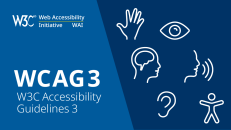Introduction to Texas Accessibility Standards
Accessibility standards are a set of guidelines that ensure that buildings and facilities are designed and constructed to be usable by people with disabilities. They aim to provide equal access and opportunity for everyone, regardless of their physical or mental abilities.
Texas Accessibility Standards (TAS) are the state-specific accessibility standards that apply to public and private buildings and facilities in Texas. They are based on the federal Americans with Disabilities Act Accessibility Guidelines (ADAAG) but include additional requirements and specifications that reflect the needs and preferences of Texans with disabilities.
In this article, we will explore what TAS are, why they are important, how they are implemented and enforced, and what are some of the key elements and features of accessible design in Texas.
Understanding Accessibility Standards

Accessibility standards are a set of technical specifications that define how buildings and facilities should be designed, constructed, and altered to accommodate the needs of people with disabilities. They cover various aspects of accessibility, such as architectural barriers, communication and signage, facilities and amenities, technology and digital accessibility, and other considerations.
The purpose of accessibility standards is to ensure that people with disabilities can access and use buildings and facilities safely, independently, comfortably, and conveniently. Accessibility standards also promote inclusive design, which is the principle of designing for the diversity of human abilities and preferences.
Benefits of Accessibility Standards for Everyone
Accessibility standards are not only beneficial for people with disabilities but also for everyone who is involved in the design, construction, and use of buildings and facilities. Some of the benefits of accessibility standards are:
- They improve the usability and functionality of buildings and facilities for everyone, regardless of their abilities or preferences.
- They enhance the aesthetic and ergonomic quality of buildings and facilities, making them more comfortable and appealing to everyone.
- They increase the safety and security of buildings and facilities, reducing the risk of accidents, injuries, or lawsuits.
- They expand the marketability and profitability of buildings and facilities, attracting more customers, clients, tenants, or visitors.
- They demonstrate social responsibility and compliance with legal obligations, showing respect and consideration for everyone’s rights and needs.
Overview of Texas Accessibility Standards (TAS)

History and Development
Texas Accessibility Standards (TAS) were first adopted in 1994 by the Texas Department of Licensing and Regulation (TDLR) under the authority of the Texas Architectural Barriers Act (TABA), which was enacted in 1970. TABA requires that public and private buildings and facilities in Texas comply with accessibility standards that are consistent with the federal standards and the American National Standards Institute (ANSI) standards.
TAS was based on the 1991 ADAAG, which were the federal accessibility standards issued by the U.S. Department of Justice under the Americans with Disabilities Act (ADA) of 1990. ADA is a civil rights law that prohibits discrimination against people with disabilities in various areas, including public accommodations, employment, transportation, state and local government services, and telecommunications.
TAS was revised in 2012 to align with the 2010 ADA Standards for Accessible Design (2010 ADAS), which were the updated federal accessibility standards issued by the U.S. Department of Justice and the U.S. Department of Transportation under the ADA. The 2010 ADAS incorporated the 2004 ADAAG, which was developed by the U.S. Access Board. This independent federal agency develops accessibility guidelines and standards for various types of facilities and vehicles.
TAS is currently being revised again to reflect the latest changes and updates in the federal and ANSI standards, as well as to address some state-specific issues and preferences. The proposed 2022 TAS is expected to be adopted by TDLR by the end of 2023.
Texas Accessibility Standards Scope and Applicability
TAS applies to public and private buildings and facilities in Texas that are subject to TABA. According to TABA, these include:
- Public buildings and facilities owned or leased by state agencies or political subdivisions of the state
- Privately owned buildings and facilities leased or occupied by state agencies
- Places of public accommodation
- Commercial facilities
Texas Accessibility Standards apply to new construction and alterations of buildings and facilities that are subject to TABA. New construction means any building or facility that is first occupied on or after April 1, 1994, or any building or facility whose last application for a building permit or permit extension is certified on or after April 1, 1994. Alterations mean any change that affects or could affect the usability of a building or facility.
Comparison with Other Accessibility Standards
TAS is similar to other accessibility standards that are used in the United States and around the world. They are based on the same principles and objectives of providing equal access and opportunity for people with disabilities. They also follow the same general format and structure of scoping requirements, technical specifications, and exceptions.
However, TAS also have some differences and variations from other accessibility standards. These differences may reflect the specific needs and preferences of Texans with disabilities, the legal and regulatory context of Texas, or the technical and practical considerations of implementing accessibility in Texas.
Some of the main differences between TAS and other accessibility standards are:
- TAS includes some additional scoping requirements that are not found in ADA standards, such as requirements for accessible windows, shooting facilities with firing positions, and residential facilities.
- TAS includes some additional technical specifications that are not found in ADA standards, such as specifications for accessible fishing piers and platforms, golf facilities, miniature golf facilities, play areas, saunas and steam rooms, swimming pools, wading pools, and spas.
- TAS has some different dimensions and measurements than ADA standards, such as a minimum clear floor or ground space (36 inches by 48 inches in TAS versus 30 inches by 48 inches in ADA), the minimum clear width of accessible routes (36 inches in TAS versus 32 inches in ADA), the maximum height of operable parts (48 inches in TAS versus 46 inches in ADA), and the minimum number of wheelchair spaces in assembly areas (varies by seating capacity in TAS versus fixed formula in ADA).
These differences do not necessarily mean that TAS is more or less stringent than ADA standards. They simply reflect the fact that TAS is tailored to the specific context and conditions of Texas. However, it is important to note that compliance with TAS does not guarantee compliance with ADA standards or vice versa. Therefore, it is advisable to consult both sets of standards when designing, constructing, or altering buildings and facilities in Texas.
See all international web accessibility laws and policies 👉
Key Elements of Texas Accessibility Standards
TAS covers various elements and features of buildings and facilities that affect their accessibility and usability by people with disabilities. These elements and features include:
- Architectural barriers and accessible routes
- Communication and signage
- Facilities and amenities
- Technology and digital accessibility
- Other considerations
In this section, we will briefly describe each of these elements and features and provide some examples of how they are addressed by TAS.
Architectural Barriers and Accessible Routes
Architectural barriers are physical obstacles that prevent or limit the access or use of buildings or facilities by people with disabilities. Examples of architectural barriers include steps, curbs, narrow doors, high thresholds, steep ramps, etc.
Accessible routes are continuous unobstructed paths that connect all accessible elements and spaces of a building or facility. Accessible routes allow people with disabilities to move around and access buildings and facilities without encountering architectural barriers. Examples of accessible routes include sidewalks, hallways, elevators, lifts, etc.
TAS requires that architectural barriers be removed or minimized to the extent feasible and that accessible routes be provided throughout buildings and facilities. TAS specifies the minimum dimensions, slopes, surfaces, clearances, and other characteristics of accessible routes and their components, such as doors, doorways, gates, ramps, curb ramps, elevators, platform lifts, etc.
Communication and Signage
Communication and signage are elements and features of buildings and facilities that convey information or instructions to users or visitors. Examples of communication and signage include fire alarm systems, signs, telephones, detectable warnings, assistive listening systems, etc.
TAS requires that communication and signage be accessible and usable by people with disabilities, especially those with visual or hearing impairments. TAS specifies the minimum technical requirements for the design, installation, and operation of communication and signage elements and features, such as audible and visual signals, characters and symbols, color and contrast, location and height, etc.
Some examples of how TAS addresses communication and signage are:
- TAS requires that fire alarm systems in buildings or facilities have both audible and visible alarms that comply with NFPA 72 National Fire Alarm Code (702.1).
- TAS requires that signs that provide direction to or information about functional spaces of a building or facility be tactile signs that have raised characters and Braille (703.1, 703.2).
- TAS requires that signs that identify permanent rooms or spaces of a building or facility be tactile signs that have raised characters and Braille and be located on the wall adjacent to the latch side of the door (703.1, 703.2, 703.4).
Facilities and Amenities
Facilities and amenities are elements and features of buildings and facilities that provide services or convenience to users or visitors. Examples of facilities and amenities include kitchens, kitchenettes, sinks, toilet facilities, bathing facilities, washing machines, clothes dryers, drinking fountains, dining surfaces, work surfaces, storage, etc.
TAS requires that facilities and amenities be accessible and usable by people with disabilities, especially those with mobility or dexterity impairments. TAS specifies the minimum technical requirements for the design, installation, and operation of facilities and amenities elements and features, such as a clear floor or ground space, reach ranges, operable parts, grab bars, seats, etc.
Technology and Digital Accessibility
Technology and digital accessibility are elements and features of buildings and facilities that involve the use of electronic devices or systems to access information or services. Examples of technology and digital accessibility include fire alarm systems, telephones, assistive listening systems, automatic teller machines (ATMs), fare machines, two-way communication systems, etc.
TAS requires that technology and digital accessibility be accessible and usable by people with disabilities, especially those with visual or hearing impairments. TAS specifies the minimum technical requirements for the design, installation, and operation of technology and digital accessibility elements and features, such as audible and visual signals, characters and symbols, color and contrast, location and height, etc.
Other Considerations
Other considerations are elements and features of buildings and facilities that do not fall into any of the previous categories but still affect their accessibility and usability by people with disabilities. Examples of other considerations include windows, judicial facilities, detention facilities and correctional facilities, residential facilities, amusement rides, recreational boating facilities, exercise machines and equipment, fishing piers and platforms, golf facilities, miniature golf facilities, play areas, saunas and steam rooms, swimming pools, wading pools, spas, shooting facilities with firing positions.
TAS requires that other considerations be accessible and usable by people with disabilities, especially those with specific or unique needs or preferences. TAS specifies the minimum technical requirements for the design, installation, and operation of other considerations elements, and features, such as a clear floor or ground space, reach ranges, operable parts, seats, etc.
Compliance and Enforcement of TAS
TAS are not only guidelines but also legal requirements that must be followed by anyone who is involved in the design, construction, or alteration of buildings and facilities in Texas. TAS is enforced by TDLR and other state and federal agencies that have jurisdiction over certain types of buildings and facilities in Texas. TAS is also subject to complaints and lawsuits by individuals or groups who claim that their rights under ADA or TABA have been violated.
Conclusion
Accessibility standards are a set of guidelines that ensure that buildings and facilities are designed and constructed to be usable by people with disabilities. They aim to provide equal access and opportunity for everyone, regardless of their physical or mental abilities.
Texas Accessibility Standards (TAS) are not only guidelines but also practical tools that can help anyone interested in learning more about accessibility and inclusive design. TAS provides useful information and guidance on how to make buildings and facilities more accessible and usable by people with disabilities.
Texas is committed to promoting accessibility and inclusivity for people with disabilities in all aspects of life. Texas recognizes that accessibility and inclusivity are not only legal obligations but also moral values and social goals that benefit everyone.
Texas has established various laws, policies, programs, and initiatives that support accessibility and inclusivity for people with disabilities.







